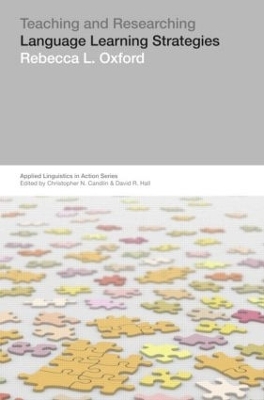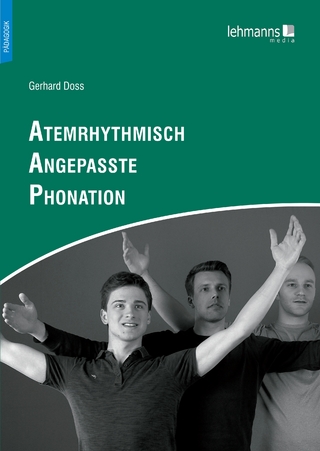
Teaching & Researching : Language Learning Strategies
Routledge (Verlag)
978-0-582-38129-2 (ISBN)
This book re-draws the landscape of language learning strategies and renews the field with vigor and excitement.
Rebecca L. Oxford is Professor Emerita, University of Maryland. She is the author of Language Learning Strategies: What Every Teacher Should Know (1990) and edited Language Learning Strategies: Cross-Cultural Perspectives (1996). She is currently working as Professor of Language Education and Research for the U.S. Air Force Culture and Language Center.
Table of Contents
Foreword
Part I: The Strategic Self-Regulation (S2R) Model of language learning
Chapter 1 Introducing the Strategic Self-Regulation (S2R) Model of language learning
1.1Overview
1.2 The S2R Model
1.3 Conclusion
Further Reading
Chapter 2 Dimension 1 (cognitive): Strategies for remembering and processing language
2.1 Linked metaphors for metacognitive strategies and cognitive strategies
2.2 Metacognitive knowledge, metacognitive strategies and metacognition
2.3 Cognitive strategies
2.4 Relevant theories and concepts
2.5 Conclusion
Further Reading
Chapter 3 Dimension 2 (affective): Strategies for emotions, beliefs, attitudes and motivation
3.1 Linked metaphors for meta-affective and affective strategies
3.2 Meta-affective knowledge, meta-affective strategies, and meta-affect
3.3 Affective strategies
3.4 Relevant theories and concepts
3.5 Conclusion
Further Reading
Chapter 4 Dimension 3 (sociocultural-interactive): Strategies for contexts, communication and culture
4.1 Linked metaphors of meta-SI strategies and SI strategies
4.2 Meta-SI knowledge, meta-SI strategies and the ‘meta’ level sociocultural-interaction
4.3 SI strategies
4.4 Relevant theories and concepts
4.5 Conclusion
Further Reading
Part II: Authentic Uses of Strategy Assessment and Strategy Assistance
Chapter 5 Strategy assessment in the S2R Model
5.1 Purposes of strategy assesssment
5.2 Key issues at the outset
5.3 Strategy observations
5.4 Actual-task verbal reports
5.5 Colour-coding of actual-task strategies
5.6 Learner portfolios that include task-related strategy assessment
5.7 Individual interviews for strategy assessment
5.8 Group interviews and discussions for strategy assessment
5.9 Discourse analysis for strategy assessment
5.10 Strategy questionnaires
5.11 Narratives for strategy assessment
5.12 Quality of strategy assessment tools
5.13 Conclusion
Further Reading
Chapter 6 Strategy instruction and other types of strategy assistance in the S2R Model
6.1 Key terms
6.2 Culture as a factor in excellent strategy assistance
6.3 Strategy instruction in separate learning-to-learn courses or programmes
6.4 Direct strategy instruction integrated into regular L2 courses
6.5 Integrating strategy instruction into L2 textbooks and course materials
6.6 The learning consultation service model
6.7 Strategy instruction through learner guidebooks
6.8 Strategy instruction in distance learning
6.9 Conclusion
Further Reading
Part III: Researching Learning Strategies
Chapter 7 A guide to conducting research on self-regulated L2 learning strategies
7.1 Worldviews underlying various research methods
7.2 Overview of methods for research
7.3 Quantitative research methods, models and validity
7.4 Qualitative research methods, models and validity
7.5 Mixed methods
7.6 Action research
7.7 General cautions in thinking about validity
7.8 Reminders about research quality and utility regardless of method
7.9 Ethics in L2 learning strategy research
7.10 Conclusion
Further Reading
Chapter 8 What we know from L2 learning strategy research
8.1 L2 reading strategies
8.2 L2 writing strategies
8.3 L2 listening strategies
8.4 L2 speaking strategies
8.5 L2 vocabulary learning strategies
8.6 L2 grammar learning strategies
8.7 Comparisons across L2 areas
8.8 Findings across more general strategy studies
8.9 Conclusion
Further Reading
Part IV: Exploring Further
Chapter 9 Strategic ‘intellectual geography’ and resources for further exploration
9.1 Part 1 of the geography lesson: review of landmarks of the S2R Model
9.2 Part 2 of the geography lesson: the terrain of self-regulated L2 learning strategies
9.3 Resources
9.4 Strengthening relationships while expanding strategy research and instruction
9.5 Conclusion
Further Reading
| Erscheint lt. Verlag | 12.1.2011 |
|---|---|
| Reihe/Serie | Applied Linguistics in Action |
| Verlagsort | London |
| Sprache | englisch |
| Maße | 233 x 161 mm |
| Gewicht | 552 g |
| Themenwelt | Schulbuch / Wörterbuch ► Wörterbuch / Fremdsprachen |
| Geisteswissenschaften ► Sprach- / Literaturwissenschaft ► Sprachwissenschaft | |
| ISBN-10 | 0-582-38129-0 / 0582381290 |
| ISBN-13 | 978-0-582-38129-2 / 9780582381292 |
| Zustand | Neuware |
| Haben Sie eine Frage zum Produkt? |
aus dem Bereich


